
Barberton is a city in Summit County, Ohio, United States. The population was 25,191 at the 2020 census. Located directly southwest of Akron, it is a suburb of the Akron metropolitan area.
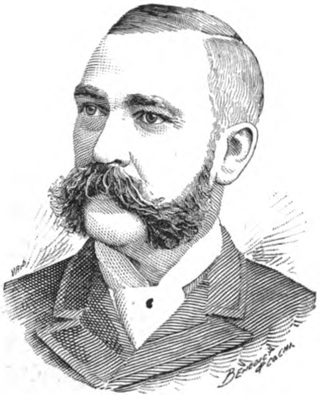
Ohio Columbus Barber was an American businessman, industrialist and philanthropist. He was called "America's Match King" because of his controlling interest in the Diamond Match Company, which had 85 percent of the market in 1881. He founded the city of Barberton, Ohio in 1891 and moved his manufacturing plant there in 1894. It produced 250 million matches per day. He also founded the Akron City Hospital.

Lake Anna Park is a 21-acre (85,000 m2) park around a spring-fed, 10-acre (40,000 m2) lake, and is located in the center of downtown Barberton, Ohio.

The Mabee House, on the grounds of the Mabee Farm Historic Site,, is the oldest house still standing in the Mohawk Valley. It is located in the town of Rotterdam, New York, in the hamlet of Rotterdam Junction, New York, along New York State Highway 5S, about six miles (9.7 km) west of the city of Schenectady.
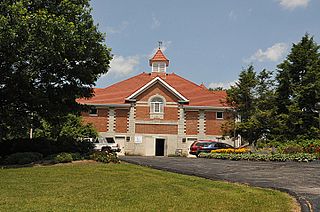
The Anna–Dean Farm is a historic farm in Barberton, Ohio, United States. It is listed on the National Register of Historic Places and is the site of several structures independently listed on the Register.

The John Scott Farm is a historic farmstead near the community of Shandon, Ohio, United States. Established in the nineteenth century and still in operation in the twenty-first, the farmstead has been named a historic site because of its traditionally built agricultural structures.

The O. C. Barber Barn No. 1, built in 1909, is an historic farm building located on the Anna-Dean Farm in Barberton, Ohio. It was built by American businessman and industrialist Ohio Columbus Barber, the developer of both Barberton, which he envisioned as a planned industrial community, and the nearby 3,500-acre (14 km²) Anna-Dean Farm, which he envisioned as a prototype for modern agricultural enterprise. Barber was called America's Match King because of his controlling interest in the Diamond Match Company.

The O. C. Barber Colt Barn, built in 1912, is an historic farm building located on Austin Drive on the Anna-Dean Farm in Barberton, Ohio. It was built by American businessman and industrialist Ohio Columbus Barber, the developer of both Barberton, which he envisioned as a planned industrial community, and the nearby 3,500-acre (14 km2) Anna-Dean Farm, which he envisioned as a prototype for modern agricultural enterprise. Barber was called America's Match King because of his controlling interest in the Diamond Match Company.
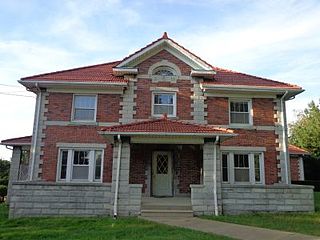
The O. C. Barber Creamery, built in 1909, is an historic farm building located at 365 Portsmouth Avenue on the Anna-Dean Farm in Barberton, Ohio. It was built by American businessman and industrialist Ohio Columbus Barber, the developer of both Barberton, which he envisioned as a planned industrial community, and the nearby 3,500-acre (14 km²) Anna-Dean Farm, which he envisioned as a prototype for modern agricultural enterprise. Barber was called America's Match King because of his controlling interest in the Diamond Match Company.

The O. C. Barber Piggery, built in 1912, is a historic farm building located at 248 Robinson Avenue on the Anna-Dean Farm in Barberton, Ohio. It was built by American businessman and industrialist Ohio Columbus Barber, the developer of both Barberton, which he envisioned as a planned industrial community, and the nearby 3,500-acre (14 km2) Anna-Dean Farm, which he envisioned as a prototype for modern agricultural enterprise. Barber was called America's Match King because of his controlling interest in the Diamond Match Company.
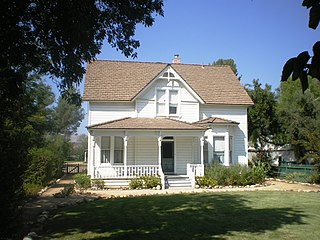
The historic Simi Adobe–Strathearn House served as the headquarters of Rancho Simi, also known as Rancho San José de Nuestra Senora de Altagracia y Simi, one of the land grants in Alta California by the Spanish government. The name derives from Shimiji, the name of the Chumash village here before the Spanish. Rancho Simi was the earliest Spanish colonial land grant within Ventura and Santa Barbara Counties. At 113,000 acres, Rancho Simi was one of the state's largest land grants.
Barber House, Barber Farm, or Barber Barn may refer to:

The Martin Marmon House is a historic house near the village of Zanesfield in Jefferson Township, Logan County, Ohio, United States. Built by pioneer settler Martin Marmon around the year 1820, it is one of the best remaining examples of Quaker architecture in the area.

The H.E. Fledderjohann Property is a complex of five historic buildings in the village of New Knoxville, Ohio, United States. Three of these structures — a house, a doctor's office, and a standalone kitchen building — were owned and used by Fledderjohann, a prominent New Knoxville physician in the late nineteenth and early twentieth centuries.

The Goll Homestead is a historic farm complex in far western Fulton County, Ohio, United States. Located in German Township northwest of Archbold, the farm has been declared a historic site because of its role in the region's settlement.
Fruitvale is an unincorporated rural community in Crockett County, Tennessee, United States. As of 2012, there were about 65 people living in Fruitvale. The village was listed on the National Register of Historic Places in 2012 as the Fruitvale Historic District.
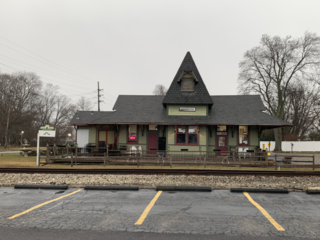
Barberton was a train station along the Erie Railroad main line in the city of Barberton, Summit County, Ohio, United States. Located 612.8 miles (986.2 km) from Hoboken Terminal on the Kent Division of the main line, the station first saw service in 1890 while under the ownership of the New York, Pennsylvania and Ohio Railroad, a subsidiary of the Erie Railroad, to help bring people to the new community. Passenger service was terminated on August 1, 1965, with the cancellation of the Atlantic Express (eastbound) Pacific Express (westbound), and multi-day trains from Hoboken to Dearborn Station in Chicago, Illinois.

Leavitt Farm is a historic farmstead at 103 Old Loudon Road in eastern Concord, New Hampshire. It consists of three 19th century farm buildings, including the c. 1847 Greek Revival farmhouse, a large c. 1888 shop and barn, and a 19th-century privy which has been converted into a well pumphouse. These buildings were built by Jonathan Leavitt, a farmer and blacksmith, and were later owned by his son Almah, a sign painter. In the 1980s the property was used by the Concord Coach Society as a headquarters and museum facility. The shop building in particular is notable for its adaptive reuse, and for its second floor ballroom space, an unusual location for that type of social space. The property was listed on the National Register of Historic Places in 1982.

The Rolfe Barn is a historic barn at 16 Penacook Street in the Penacook village of Concord, New Hampshire. The property was listed on the National Register of Historic Places in 2007. The barn was first added to the New Hampshire State Register of Historic Places in 2003; additional structures on the property were added in 2005 (homestead) and 2008.

Arthur Oswin Austin was an American electrical engineer and inventor. A native of California, he lived for a few years in New York where he worked for General Electric and the Lima Insulator Company, but spent most of his adult life in Ohio where he married, worked for the Ohio Brass Company and founded the Austin Insulator Company. He bought a large estate in Barberton, Ohio, lived in the mansion, and built an extensive outdoor electrical laboratory on the grounds.



















